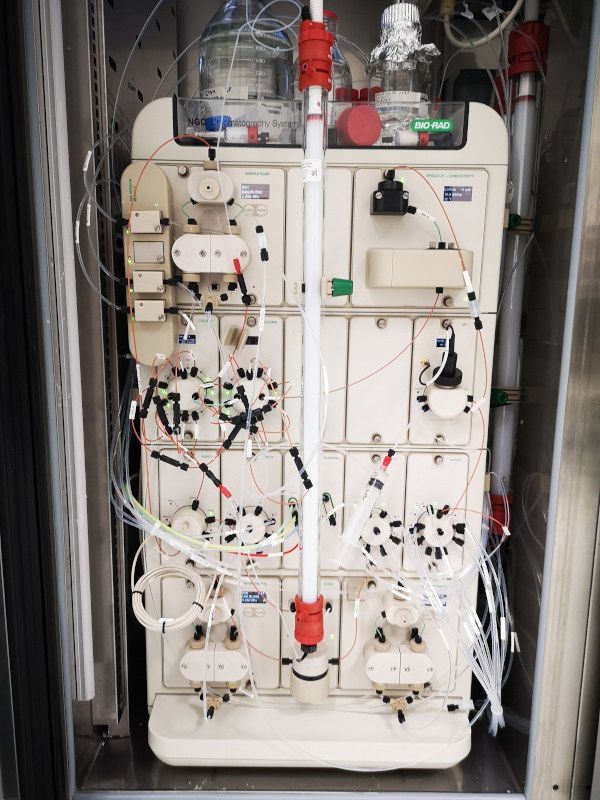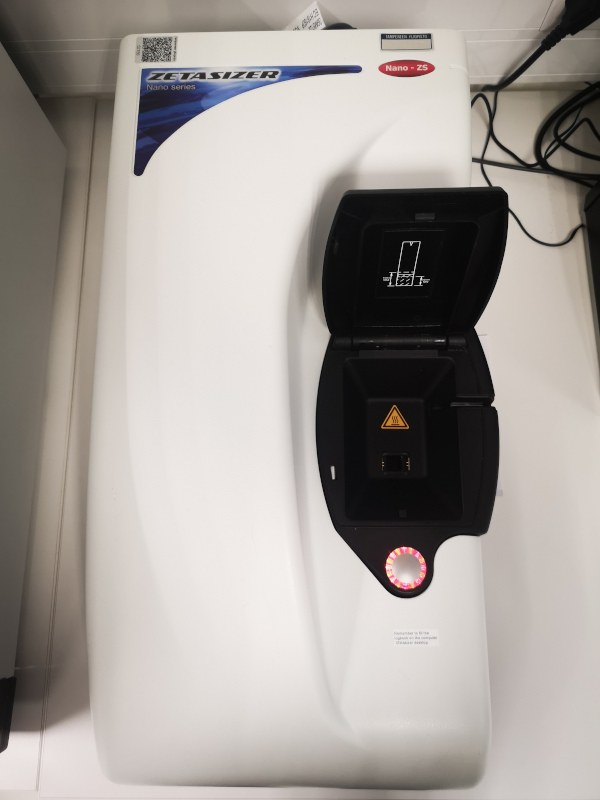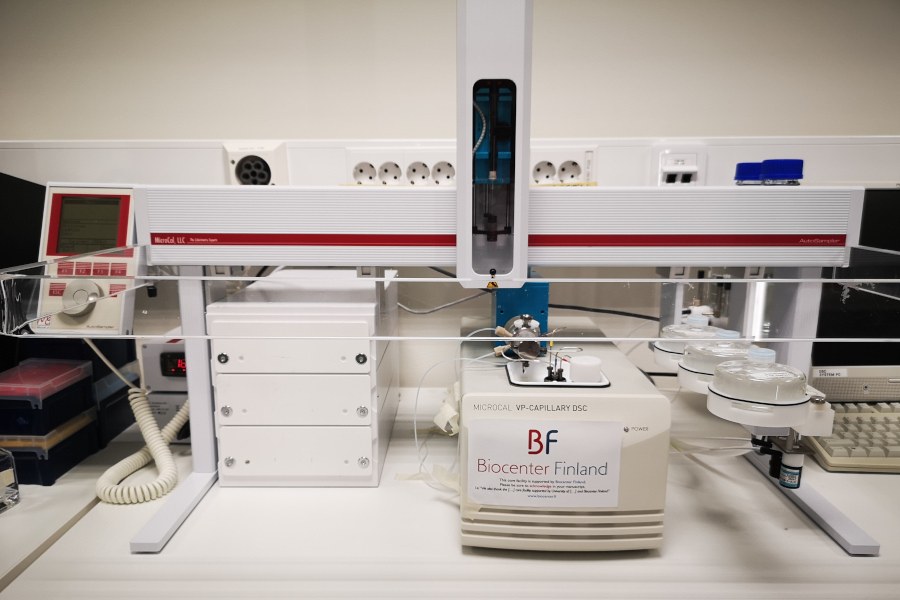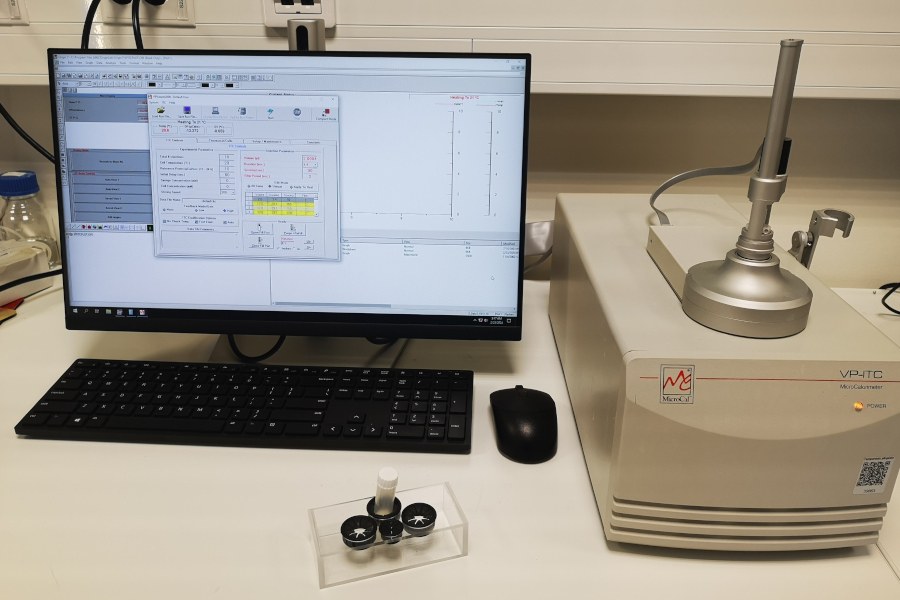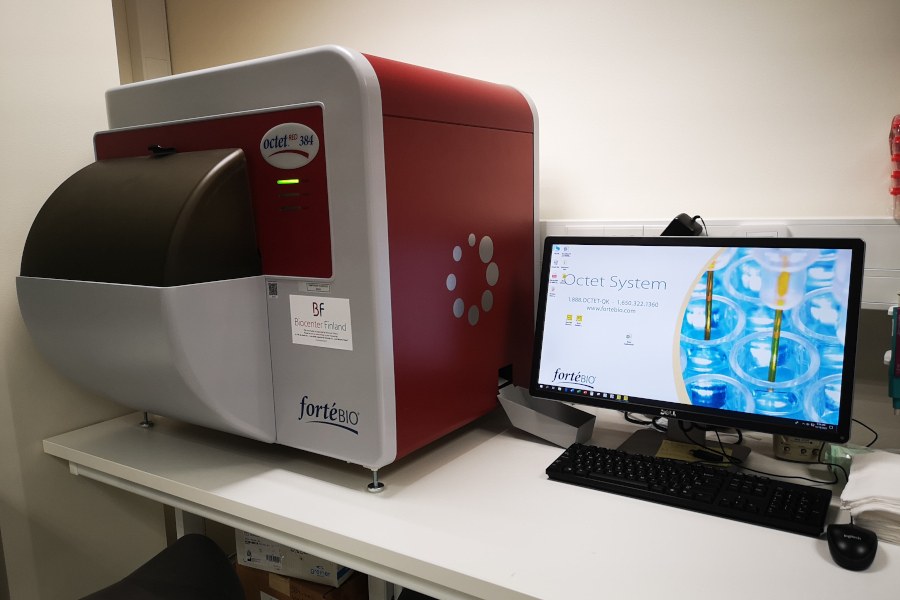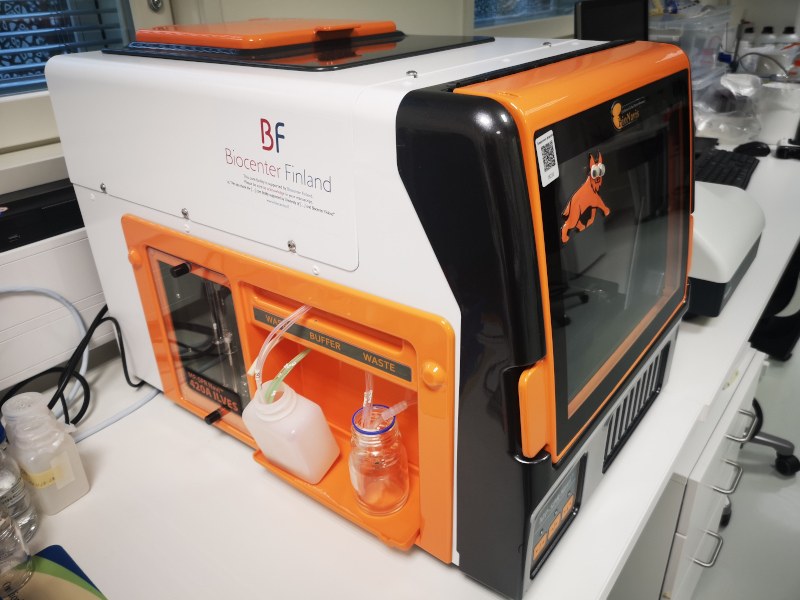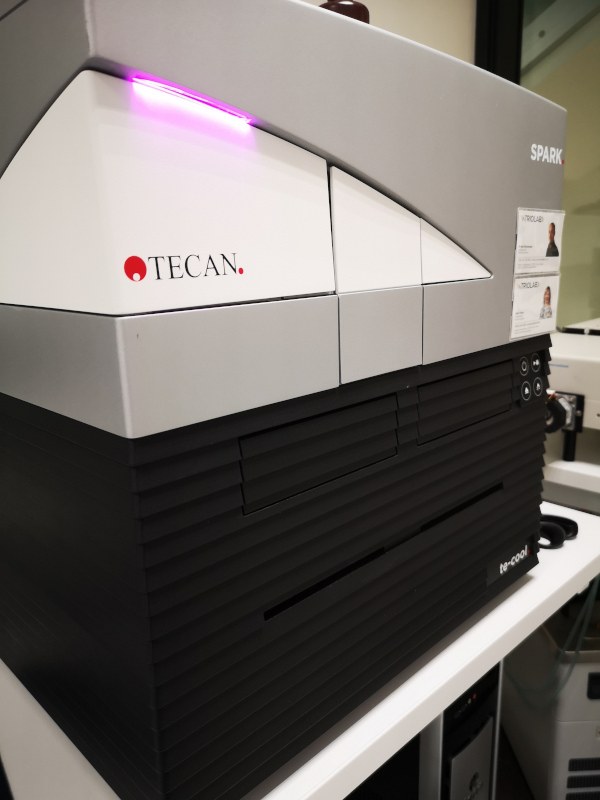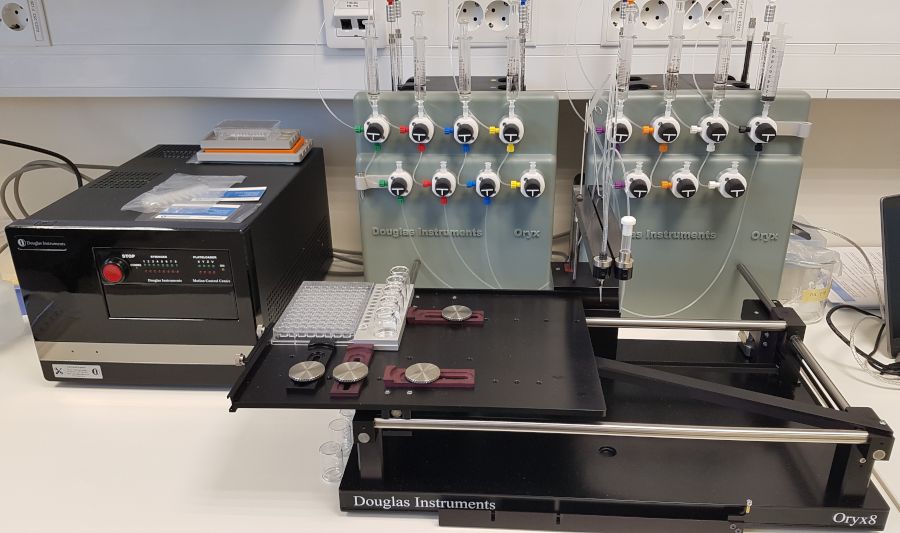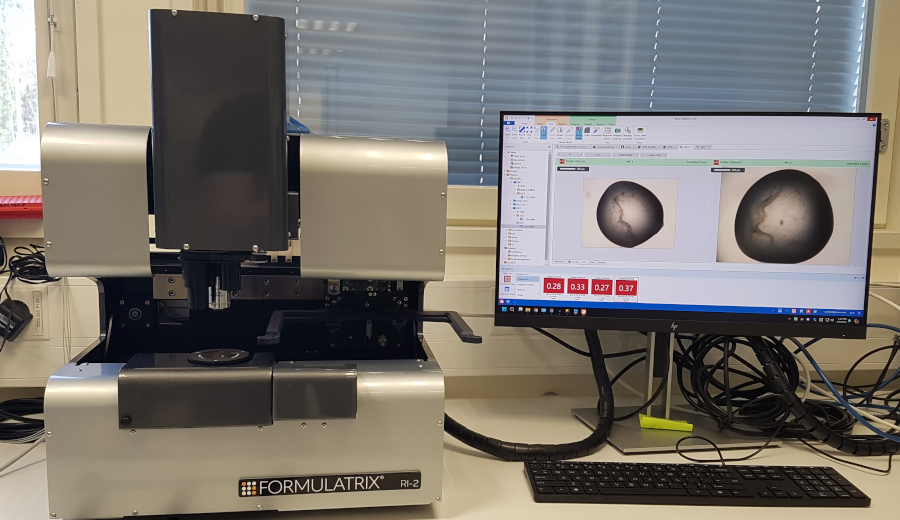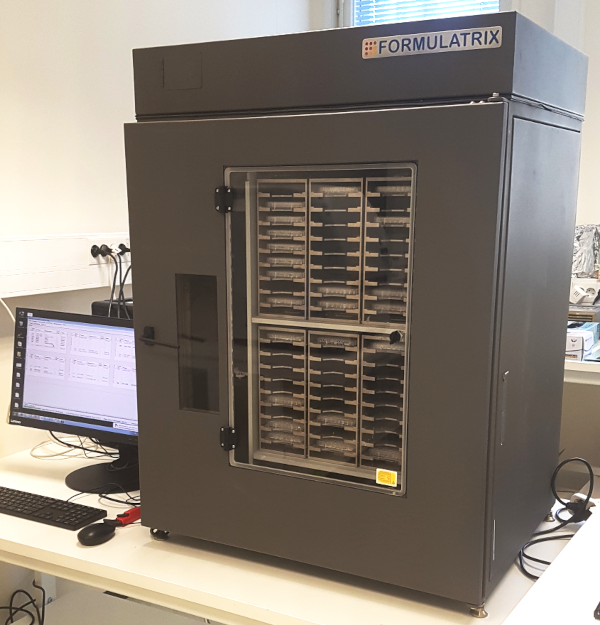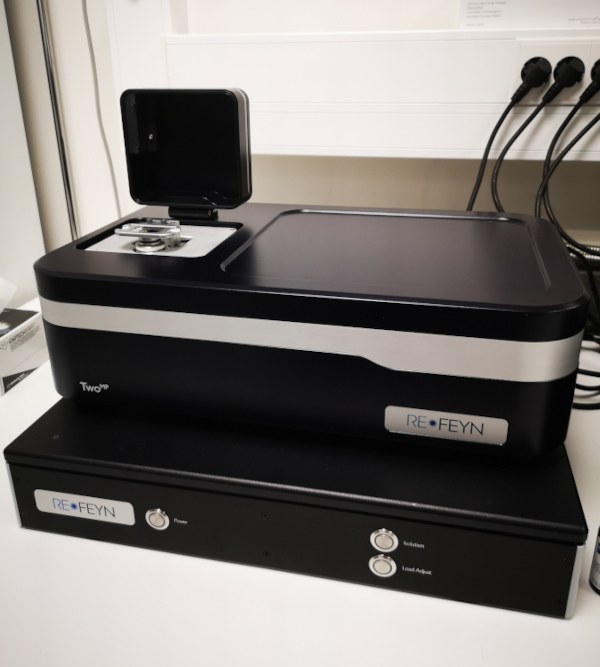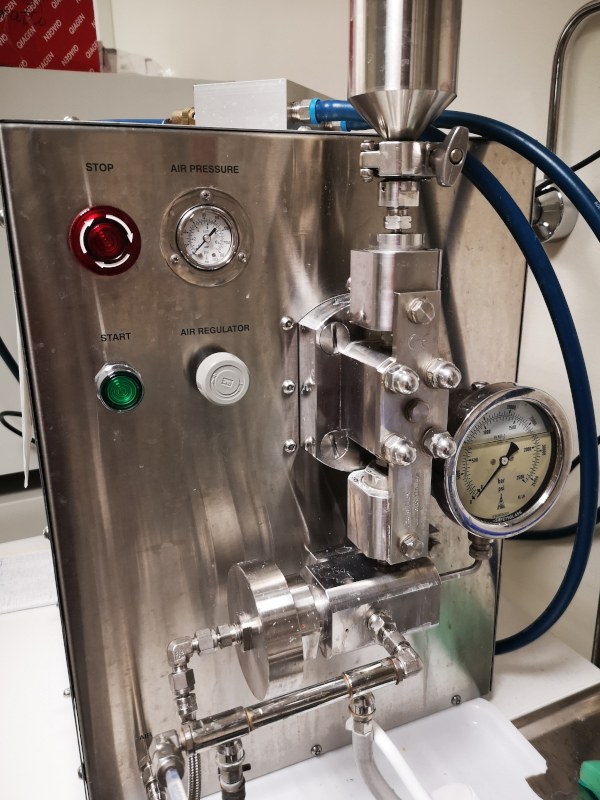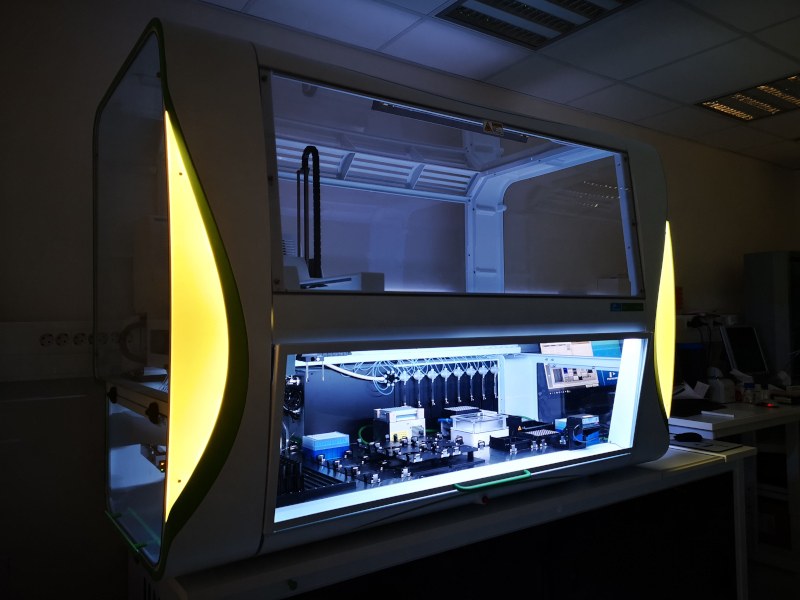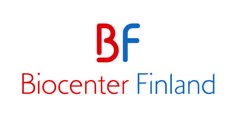
Protein Services

Introduction
The facility offers protein expression, purification and characterization. Proteins are expressed in bacterial, insect and mammalian cells, which supply the expression and modification requirements for a comprehensive variety of proteins for wide variety of biological assays. The proteins may be used in structural biology, protein-ligand and protein-protein interaction studies, and in development of diagnostics.
Protein Expression Service
Protein expression in E. coli
Customer provides expression vector and the expression will be first confirmed utilizing bottle or plate cultures (makes it also possible to optimize growth media). After positive results the production may be performed by using bottles in shakers or with small scale fermentor.
The bioreactor laboratory service offers protein production in bacterial host in 4.5 l batches using Labfors Infors 3 fermentor. The accurately controlled growth conditions enable higher cell densities and better product quality than by using conventional bottle cultures.
PS sends the final products to the customer and reports SDS-PAGE and Western Blot results (customer is asked to provide antibodies for WB if not usual antibody is available).
Baculovirus Expression Vector System (BEVS)
Customer provides the desired insert in plasmid donor vector and is asked to confirm the clone by DNA sequencing. If necessary, DNA sequencing can be done also in the University of Tampere.
Note! PS kindly asks to measure and label the concentration of the plasmid provided (min 5 ng, V=25 µl).
The donor plasmid is used to prepare three to six bacmids, which are confirmed by PCR and then three of them are transfected to the Sf9 insect cells (optionally HighFiveTM cells). Volume of secondary virus (P2) is typically 50 ml and expression of protein is confirmed by Western Blot from cell pellet and medium (antibodies against possible purification tag or provided by customer). Virus is stock up for one month and can be used to optimize the expression or for possible production scale-up up to 4.5 L in aliquots of 500 ml. Moreover, protein purification with His-tag or Strept-tag is also possible.
The mammalian cell line for transfection, expression, and large-scale recombinant protein production
Customer provides the desired cDNA in suitable plasmid vector and is asked to confirm the clone by sequencing. If necessary, DNA sequencing can be done also in the University of Tampere.
Expression vector is transfected to the mammalian cells (CHO-S or HEK 293F) prior to four weeks long cell line selection. SDS-PAGE and Western blot is done from pilot scale expression to confirm protein expression. Cell lines are stored for four months so they can be used to the further expression. Decision of scale-up is asked to give in a month. In scale up, cells are first adapted to the suspension growth, and protein expression is confirmed with SDS-PAGE and Western blot from 50 ml patch. This step takes about two weeks, and then scale up to the 5 L is possible.
Protein Isolation, Purification, and Characterization
Host cells are collected by centrifugation and lysed by using either a high-power sonicator or high-pressure homogenizator Emulsiflex. Protein isolation and purification is typically done by chromatographic methods. The protein quality can be evaluated by several methods, including analytical gel filtration, SDS-PAGE, 2-D electrophoresis, dynamic light scattering, calorimetric methods and biosensors. Protein crystallization services are also provided. Proteins can be delivered either in solution or as freeze-dried.
Equipment tab provides a brief summary of the methods and instrumentation available.
